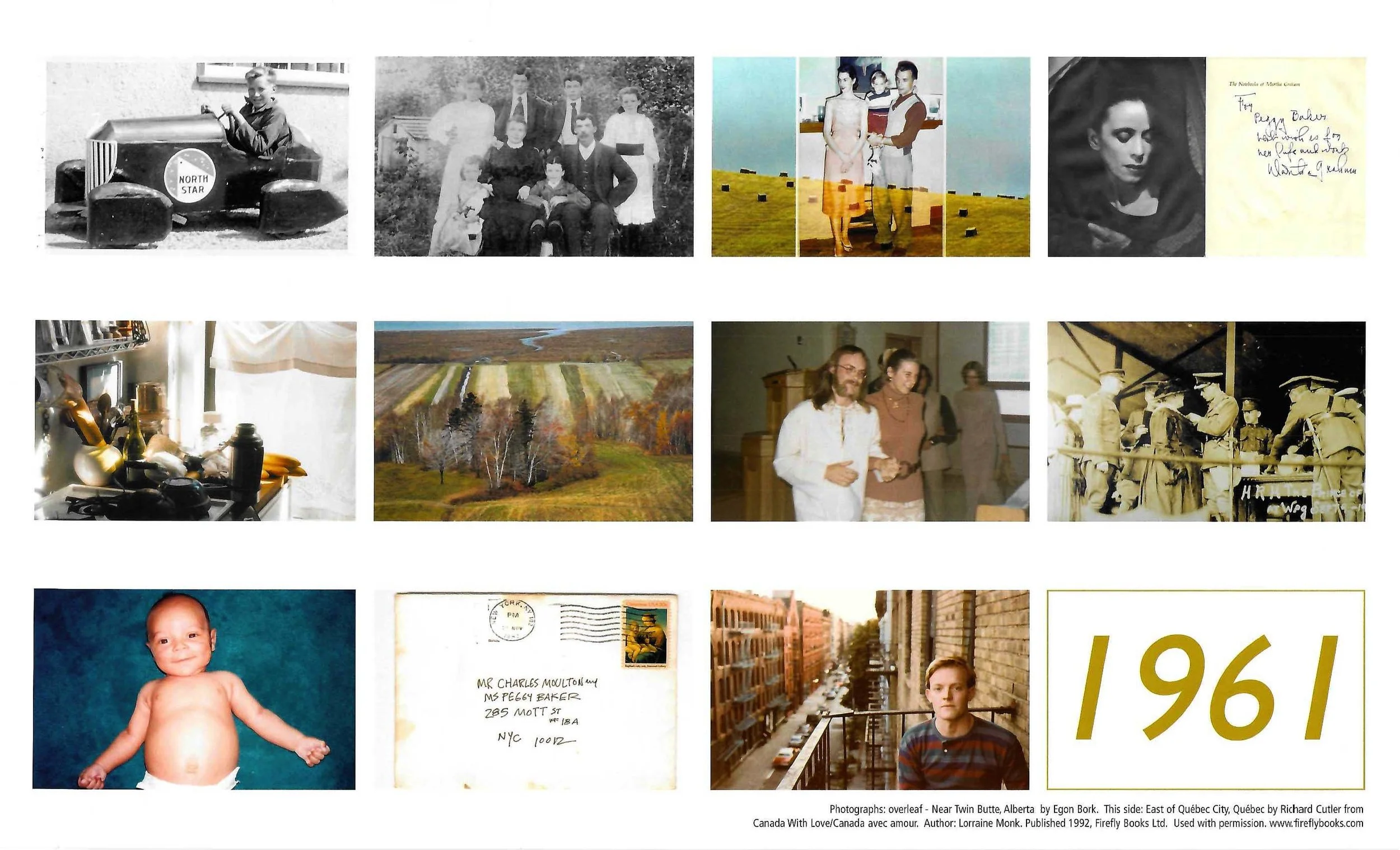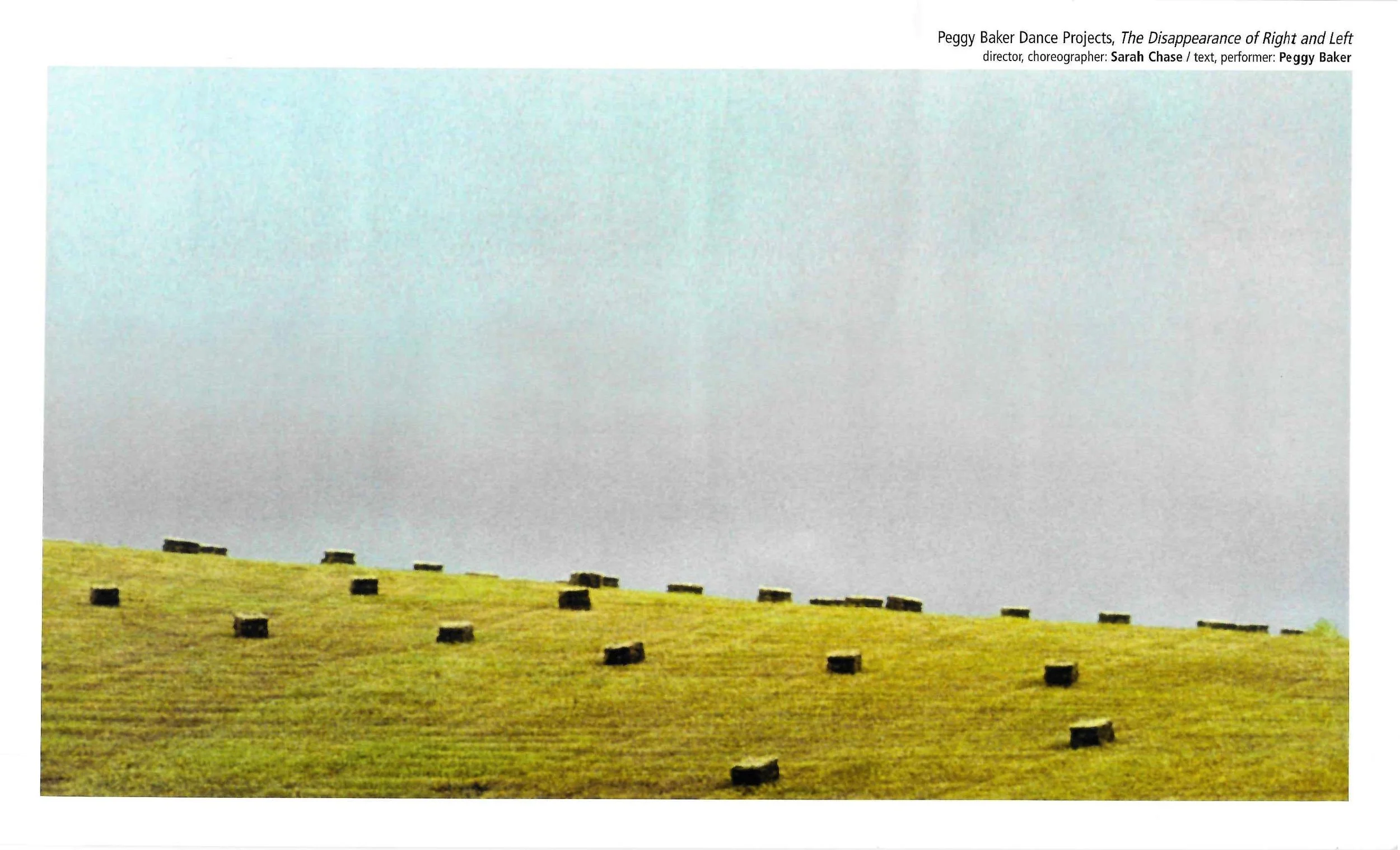The Disappearance of Right and Left (2004)
Sarah Chase is a superb artist whose body of work stands as an utterly unique and hugely valuable contribution to the art form. Sarah frames memoir within choreographic structures, combining text and movement in ways that allow the inner life and personal history of the performer to be drawn into alignment with the life experience and empathetic capacities of the audience witnessing the work.
I’m thinking that my own dance with spoken text (a true story, 1997) was made the same year that Sarah created her first dancestory, Muzz. Sarah’s dance was much longer and more complex structurally, but the biggest difference was that Sarah spoke in the first person – unabashedly using the identifier “I” – whereas I spoke in the third person, veiling my relationship to the events I described through the use of the descriptor “the woman”. A studio showing of Muzz by Sarah at Damn Straight on Spadina Avenue in Toronto remains an indelible memory. The power of the work, and of her performance, was absolutely the inspiration for approaching her with the idea of commissioning a work in this style for me.
Six months prior to going into the studio, Sarah assigned me the task of writing two stories representing each year of my life. 51 years old at the time, I needed to excavate 102 stories from my life. Conversations with my parents about my childhood also brought forward stories from their own lives and in the end, Sarah included stories that spanned five generations in my family.
The Disappearance of Right and Left emerged as a work of 45 minutes that was both terrifying and cathartic to perform. It revealed deep connections of experience and learning across the history of my family and allowed me to come to terms with some of the most dismantling turning points in my own life.
Sarah possesses the extraordinary ability to compose and direct performance works centred on personal history without ever veering into the trite or sentimental. Dancestories made for herself, for Marc Boivin, Andrea Nann, and a second work made for me in 2018, (unmoored), comprise a truly remarkable collection of works. - PB
Sarah adds this: Peggy was a pivotal teacher, mentor and guide in my life, and I was thrilled and awed to be creating with her in 2004.
I loved how Peggy spoke when she taught, the vivid way she had with language, the colour of joy in her voice, and her inimitable gestures. I knew I wanted to make a work that would allow Peggy to speak stories from her life, to share her rich inner world, and to magnify her extraordinary gestures into a danced language. I wanted to understand her biography and how it had shaped the artist I loved, and if possible to reveal this to an audience.
These 102 stories/memories she assembled sparked deep conversation between us. I remember feeling overwhelmed by the many possible performance directions the material could take. (The first rehearsal we shared for a small audience was over an hour and a half long!) We ended up focussing on 12 stories that were moments when she or a member of her family, experienced a deep shift in perception, which we captured in the title.
To me, Peggy’s dancing contained the big dome of the high prairie skies around Edmonton where she grew up; the open geography of her childhood called forth in her long expressive arms and hands. So part of the beginning of the rehearsal process was creating a dance based on images and experience of being in that landscape. I wanted this to be the ground for the emotional stories that she would be sharing during the piece.
Peggy and I poured over photographs that represented the 12 essential stories we finally chose. In the first performed versions there was a large backdrop/set structure that had these double-sided images on it. They swivelled to reveal a full prairie landscape that was on the reverse of the 12 individual story images. I realised, eventually, that the backdrop was actually limiting the performances. Peggy’s gestures were conjuring so deeply the worlds of the stories, that having a literal photographic illustration behind her was an unnecessary distraction. We stopped using the backdrop and replaced it with a 14” x 8” sheet that was placed on the seats prior to the audience arriving (see below).
This process was an incredible journey into Peggy’s inner life. It deeply changed the way I thought about creating, and continues to inform my work to this day. - SC
“Disappearance is autobiographical…Chase makes full use of Baker’s wonderfully eloquent arms that carve the air in generous sweeping motions or settle momentarily into a detailed sculptural pose.” Michael Crabb , The National Post
related links
The Disappearance of Right and Left is one of the few works in Peggy’s repertoire danced to music with lyrics. For a deep dive on Joni Mitchell’s classic song Amelia, selected by Peggy to feature in this show, visit jonimitchell.com
credits
choreography, direction:
Sarah Chase
music:
Joni Mitchell, Amelia
Beethoven, Sonata in F Minor, Opus 57 (Andante Con Moto)
Ginastera, Danza de la Mozo Donosa
text and performance:
Peggy Baker
lighting design:
David Morrison
pianist:
Andrew Burashko
premiere
Toronto
May 11 - 16, 2004
Betty Oliphant Theatre
subsequent presentations
media links
See 2014, 2009, 2007, 2006, 2005, and 2004 in the media and awards archive
photography
As credited.






